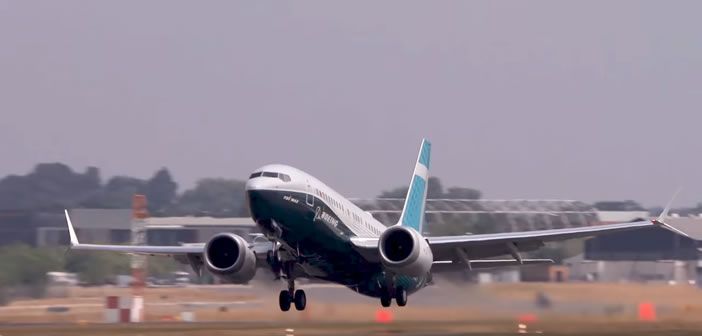Boeing’s plans to return the 737 Max to service have suffered another setback after FAA investigators revealed it had identified further issues with the aircraft during simulator testing.
Boeing has been working with the Federal Aviation Administration (FAA) and regulators around the world to rectify problems with the aircraft after two 737 MAX crashes during 2018 in Ethiopia and Indonesia, which killed 157 and 189 people respectively. The global fleet of 737 MAX aircraft has been grounded since March 2019.
Investigators have so far identified faults with the 737 Max’s anti-stall software, including faulty sensors within the MCAS (Maneuvering Characteristics Augmentation System) stabilization system and the lack of a compulsory alert system in the cockpit as the cause of the incidents.
The FAA and Boeing have been reviewing the 737 Max’s software and flight control performance using simulators. Airlines had expected the testing to conclude during summer and the aircraft to return to service from the end of August.
However the FAA and Boeing have said this week that a new potential risk has been identified during testing and must be fixed before the 737 Max can return to service. The announcement resulted in US airlines making further delays to the aircraft’s reintroduction, including Southwest, which added another month’s delay to the 737 Max’s scheduled reintroduction to October 2019.
The FAA did not give details of the new problem, although it has been reported it is connected to the way the aircraft’s flight computer processes data about the state of the aircraft’s runaway stabilizer trim.
The FAA said in a statement, “The FAA is following a thorough process, not a prescribed timeline, for returning the Boeing 737 Max to passenger service and will lift the aircraft’s prohibition order when we deem it is safe to do so.
“We continue to evaluate Boeing’s software modification to the MCAS. On the most recent issue, the FAA’s process is designed to discover and highlight potential risks. The FAA recently found a potential risk that Boeing must mitigate.”
Boeing said, “The FAA review and process for returning the 737 MAX to passenger service are designed to result in a thorough and comprehensive assessment. Boeing agrees with the FAA’s decision and request and is working on the required software.
“Addressing this condition will reduce pilot workload by accounting for a potential source of uncommanded stabilizer motion. Boeing will not offer the 737 MAX for certification by the FAA until we have satisfied all requirements for certification of the MAX and its safe return to service.”
Read more about the Boeing 737 Max software issues and how to safely approach software testing here.





